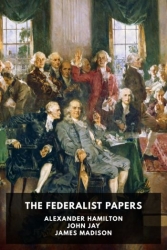Description
In early 1787, the Congress of the United States called a meeting of delegates from each state to try to fix what was wrong with the Articles of Confederation. The Articles had created an intentionally weak central government, and that weakness had brought the nation to a crisis in only a few years. Over the next several months, the delegates worked to produce the document that would become the U.S. Constitution.
When Congress released the proposed Constitution to the states for ratification in the fall of 1787, reaction was swift: in newspapers throughout each state, columnists were quick to condemn the radical reworking of the nation’s formative document. In New York State, a member of the convention decided to launch into the fray; he and two other men he recruited began writing their own anonymous series defending the proposed Constitution, each one signed “Publius.” They published seventy-seven articles in four different New York papers over the course of several months. When the articles were collected and published as a book early the following year, the authors added another eight articles. Although many at the time guessed the true identities of the authors, it would be a few years before the authors were confirmed to be Alexander Hamilton, James Madison, and John Jay, Hamilton and Madison both being delegates at the convention.
Although the articles’ influence on the Constitution’s ratification is debated—newspapers were largely local at the time, so few outside New York saw the articles—their influence on the interpretation of the Constitution within the judiciary is immense. They are a window not only into the structure and content of the document, but also the reasons for the structure and content, written by men who helped author the document. Consequently, they have been quoted almost 300 times in Supreme Court cases. They remain perhaps the best and clearest explanation of the document that is the cornerstone of the United States government.
